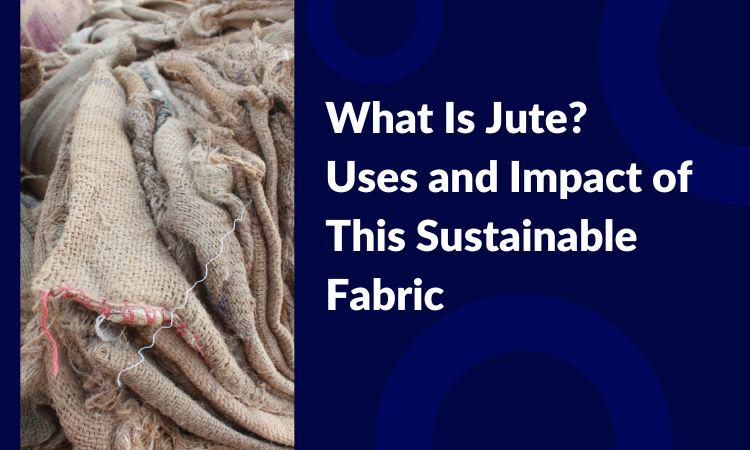What Is Jute? Uses and Impact of This Sustainable Fabric
Introduction:
As individuals become more aware of their impact on the planet, there is a rising need for eco-friendly products. The natural fibre jute, which has been used for many different purposes throughout history, is one such material that has recently come into popularity. In this blog, we will investigate the history of jute, its useful characteristics, and the good effects it has on both the natural world and human culture.
I. Defining Jute:
The stem of the jute plant (Corchorus species) is used to create the natural fibre known as jute. The tropical parts of Asia, especially in countries like India and Bangladesh, are the primary locations of its cultivation. Because of its adaptability and resilience, jute has been used for ages in a wide range of cultures. Biodegradability is a key factor in jute’s sustainability since it allows the material to break down in the environment without generating any toxins. When compared to other crops, jute requires less fertiliser and pesticide use during growing, making it more environmentally friendly.
II. Jute's Attractive Characteristics and Properties:
Jute is a popular sustainable fabric because it has various appealing characteristics and traits.
Strength:
Jute fibres are ideal for use in industrial settings due to their high strength and durability.
Breathability:
Comfort and coolness in hot weather are guaranteed by the breathable nature of jute cloth.
Absorption Of Moisture:
Jute is great for things like rugs and carpets because it can absorb moisture without becoming soggy.
Insulation:
To keep things at a pleasant temperature, jute’s excellent insulating capabilities come in handy. Mechanical processing of the stems removes the non-fibrous components, leaving usable jute fibres. The treated jute fibres are extremely long and glossy, making them ideal for use in textile production. Because of its adaptability, jute may be combined with both natural and synthetic fibres to produce new and exciting fabrics.
III. Uses Of Jute:
Jute’s adaptability and eco-friendliness mean that it can be used in a broad variety of contexts.
Fashion And Textiles:
In the textile and fashion industries, jute fabric is used to make sarees, skirts, blouses, and even bags. When used with other materials, jute’s aesthetic appeal and versatility are increased.
Visit our site to read more: https://vimpexltd.com/what-is-jute-uses-and-impact-of-this-sustainable-fabric/

Comments
Post a Comment